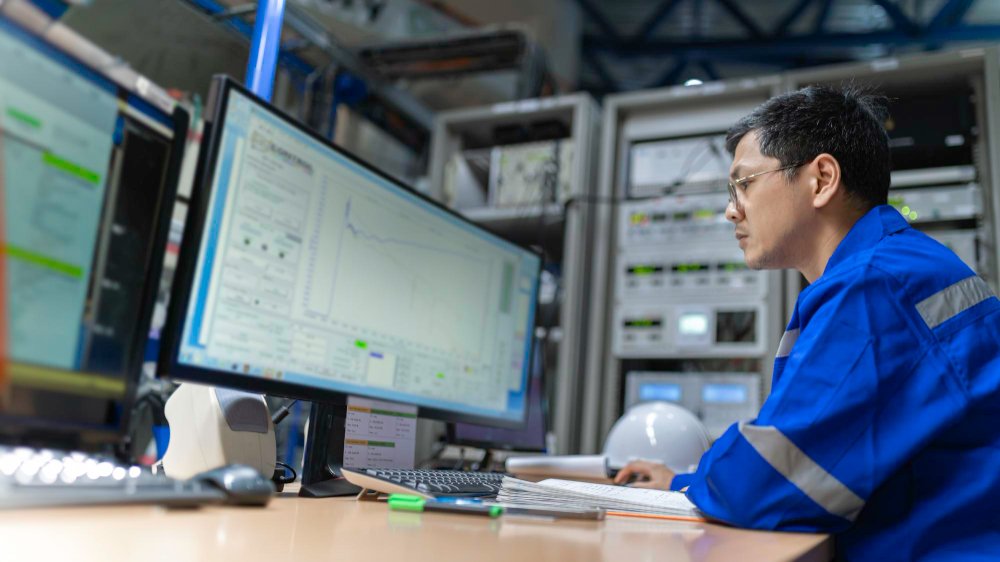The Tech Master – Automotive Software Development. “The future is already here — it’s just not very evenly distributed,” said William Gibson, an influential science fiction writer. His words are very relevant in the automotive world today. We’re seeing a big change where traditional cars and advanced technology are blending together.
The role of software in the automotive industry has changed a lot. It’s now key to how cars work and how people use them. We’re at the start of a big shift in how cars are made and used.
Looking ahead, the numbers are impressive. By 2030, the global market for automotive software and electronics is set to hit $462 billion. This growth is thanks to cars becoming smarter and more connected with advanced computer systems.
Also, car makers are taking more control over their software development. This shows how serious they are about handling the complex systems in cars. With new software leading the way, cars are becoming more than just a way to get from point A to B. They’re changing how we experience our travels.
This section sets the stage for exploring the big changes coming in the automotive world. We’ll dive deeper into the innovations that are shaping our future.
The Growing Importance of Software in the Automotive Sector
The automotive industry is changing fast, thanks to ACES trends like autonomous driving and electrification. These changes are not just about making cars better. They’re changing how we think about getting around. With new tech coming out so quickly, old ways of making cars just won’t cut it anymore.
Transformative Impact of ACES Trends
ACES trends are bringing big changes to the industry. Cars now have more advanced tech, making them safer and more fun to use. Autonomous driving is a key part of this shift. Companies are focusing on software to meet new safety rules and what customers want.
We need to adapt quickly to keep up with these changes. It’s all about making sure our work fits with what’s new and what people expect.
Market Growth Projections for Automotive Software
The demand for automotive software is growing fast. It’s expected to jump from about USD 25 billion in 2022 to around USD 116.62 billion by 2032. This shows how important software is for things like safety features and entertainment in cars.
Understanding this growth is key for planning the future. It helps us see where the industry is headed and what we need to do next.
Software as a Key Driver of Innovation
Software is driving innovation in the automotive world. Today’s cars have over 100 million lines of code, showing how big a role software plays. Companies are working on new tech like real-time monitoring and AI for self-driving cars.
We need to keep adding these new features to our work. This way, we can stay ahead in a world that’s always changing.
Software Development in Automotive Industry
The world of software development in the automotive industry is changing fast. It’s filled with new technologies and complex challenges. Companies need to update their software development to keep up with modern cars’ advanced features. These cars use artificial intelligence and machine learning to improve how they work and keep us safe.
Current State of Software Development Practices
Now, software development in cars faces big challenges. Modern cars have complex software that controls everything from the engine to the entertainment system. We see big differences in how well teams work together. This shows the need for better ways to make and improve software.
Challenges in Automotive Software Development
The automotive industry has many challenges. Companies must keep up with new tech and handle complex software. As cars become more connected and self-driving, they create a lot of data. This data is both a chance and a challenge.
Keeping cars safe and protecting connected systems from cyber threats is crucial. To overcome these issues, companies must improve their software development. This will help them keep up with the fast-growing automotive software and electronics market.
Advancements in Autonomous and Connected Vehicle Software
The automotive industry is changing fast, thanks to new tech in autonomous and connected cars. AI is making cars smarter and safer by helping them understand their surroundings better. This makes driving safer and more efficient.
Integration of AI and Machine Learning Technologies
AI and machine learning are key to making self-driving cars. They help cars make quick decisions, like staying in lanes and controlling speed. This tech also makes safety features better by using real-time data.
Now, cars are not just luxury items but essential for keeping up with the fast-changing market. Software-defined vehicles are becoming a must-have for car makers.
Addressing Cybersecurity Concerns
Even with all the progress, cars face big cybersecurity challenges. As cars get more connected, the risk of hacking grows. It’s crucial to keep vehicle software safe to protect passengers and keep trust in the industry.
We need to create strong security measures to protect against threats. This will help make sure connected and self-driving cars can safely join our roads.
Industry Innovations: The Rise of Automotive Software Platforms
The automotive world is changing fast, making new ways to develop software a must. Automotive software platforms are key for manufacturers. They help with growth and linking different car systems together.
Model-Based Design and its Implications
Model-based design makes making cars easier by giving engineers a clear plan. It helps us build a single system, cutting down on risks and making things more efficient. With car software expected to grow a lot, using this method is more important than ever.
This approach is key for working with many systems together smoothly. It helps us handle the complex world of car software well.
Benefits of Automotive DevOps Practices
Automotive DevOps brings teams together, making sure software is always improving. It helps us bring new features and updates out faster. In cars, software is often more important than hardware.
This way of working lets us quickly try out new ideas and make sure they work well. With technology always changing, DevOps keeps us ahead by making things more efficient and tackling software challenges.
Conclusion
The journey of automotive software development is changing fast. It shows us that software is key to the future of cars. The market’s growth highlights how software is changing how cars work and move in our world.
By using new ACES trends and AI, we’re on the brink of a big change in car software. This change will make cars safer and improve how they work together in traffic.
Advanced software is making cars safer and making drivers happier. It helps predict when cars need maintenance and fixes problems faster. As cars get smarter, so will the tools that help us use them better, making driving easier and more efficient.
As we move towards self-driving cars and better connectivity, the industry must keep up and innovate. Being able to adapt will shape the future of how we move around. It will make driving safer, smarter, and better for our planet.
FAQ
What are the main trends driving software development in the automotive industry?
The main trends are ACES: Autonomous driving, Connectivity, Electrification, and Shared mobility. These trends are changing the industry and creating new opportunities for innovation.
How is software contributing to the advancement of autonomous driving systems?
Software is key by supporting Advanced Driver Assistance Systems (ADAS) and autonomous driving. AI and machine learning improve vehicle decisions and adaptability.
What challenges do automotive companies face in software development?
Companies face challenges like complex software, lack of modularity, cybersecurity threats, and team productivity issues. About 60% of R&D leaders feel unprepared for the needed changes.
How does automotive cybersecurity impact software development?
Protecting vehicle software from hackers is crucial. Hacks can threaten passenger safety and security, making cybersecurity a big concern in the industry.
What are the benefits of adopting model-based design in automotive software?
Model-based design helps automakers have a unified architecture. It improves efficiency, lowers development risks, and makes processes smoother across teams.
How does the rise of automotive DevOps practices influence software development?
DevOps brings a culture of continuous integration and delivery. This leads to faster time-to-market for new features and improvements, boosting quality and innovation.
What is the projected growth for the automotive software market?
The automotive software and electronics market is set to grow from $238 billion in 2020 to $469 billion by 2030. This represents a 7% CAGR, faster than the overall automotive market growth of 3%.
How are connected car technologies changing the automotive landscape?
Connected car tech improves vehicle functions, enabling real-time data processing and better interactions between vehicles and users. This contributes to the growth of software-defined vehicles.
What role does automotive AI play in enhancing vehicle capabilities?
Automotive AI is crucial for improving safety and adaptive driving features. It uses real-time data for better decision-making in systems like adaptive cruise control and lane-keeping assist.



